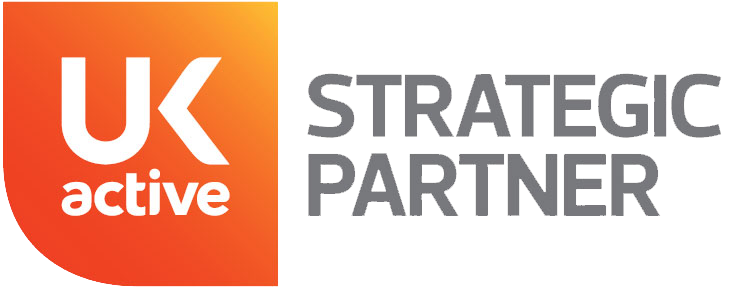The announcement that funding has been secured for the Pupil Premium will help every school administration meet their educational outcomes. This financial year has seen the grant increase to almost £2.9 billion with eligible schools including local-authority-maintained schools, academies, free schools, and non-maintained schools.
The Challenge
The main challenge has aways been the confirmation of funding. Often it comes too late for schools to maintain or produce a long-term strategy. This year funding has been secured for two years, as of the 8th of March, and will meet the promises of the current government to boost equal opportunities in PE and School Sport. Research performed by Youth Sport Trust found that the majority of schools would not be able to manage their current provisions without a commitment to funding for PE and school sport.

The full package includes the following:
- A commitment of £600 million for the next two academic years (2023-24 & 2024-25)
- Schools will deliver a minimum of 2 hours of curriculum PE, including increased support through a refreshed School Sport Action Plan
- £22 million for two more years of the School Games Organiser Network (SGO)
- Equal access to sport offering girls and boys the same sports as needed
- Up to £57 million in funding for the ‘Open Sports Facilities’ programme that will open up school facilities outside of school hours
- A new digital reporting tool for Primary PE and Sport Premium to maximise the advantage to pupils
- An expanded School Games Mark to create parity for girls
So, what do you need to know about using the Pupil Premium? Read on to find out…
Is your school eligible for funding?
The funding is available for a wide range of schools, including local-authority-maintained schools such as mainstream infant, primary, middle, junior, and secondary schools and all schools serving children from reception to year 11. Schools serving children with special educational needs or disabilities, those attending PRUs or pupil referral units, hospital schools, academies, free schools, and non-maintained special schools are also eligible.
For eligible children attending independent special schools, the Pupil Premium can also be provided where the local authority pays full tuition fees.
Which pupils is the PE Premium aimed at supporting?
There is an increased focus on equity for disadvantaged pupils in the updated guidance. The groups that are eligible for the Pupil Premium include:
- Pupils who are recorded as eligible for free school meals or have been recorded as eligible in the past six years, including eligible children of families who have no recourse to public funds (NRPF)
- Children looked after by local authorities, referred to as looked-after children
- Children previously looked after by a local authority or other state care, referred to as previously looked-after children
You can find a breakdown of how much is allocated to each type of pupil here.
When will funding be available?
Funding for the Pupil Premium grant is allocated to schools and local authorities according to their per-pupil rates. Those rates include children eligible for free school meals and previously looked after or currently looked after children. Funding ranges from £1455 to £2530 for each primary-aged pupil per year and £1035 to £2530 for each secondary-aged pupil.
The government has permanently extended free school meals to children in all households with looked-after children or in NRPF households. From April 1st 2023, this includes children who have been adopted or left care and any equivalents in England and Wales. Funding for these children is paid to their local authority and is managed by the virtual school head in consultation with the child’s school
If you have children whose parents are serving in the armed forces
Additional funding is available to schools for pupils whose parents serve in the armed forces. It is included in the pupil premium to make it easier and will allow state-funded schools to have an additional £335 per eligible pupil.
For pupils to be eligible, one of their parents must be a serving member of the regular armed services or be registered as a service child on a school census or have a parent who has died while serving. The funding is designed to be pastoral, offering support toward the impact of deployment.
How should you approach and implement your strategy?
The recommended approach to using the funding is split into five steps which follow the menu of approaches stipulated in the EEF guide. You should:
- Identify the challenges faced by disadvantaged pupils
To use your premium effectively, it is essential that you use internal and external assessments to determine the current situation for disadvantaged pupils. With the focus on disadvantaged pupils, some of the proposed areas are attendance, absence, behavioural problems and exclusions, mental health, wellbeing, and safeguarding concerns.
- Use evidence to support your strategy
The menu of approaches was developed to help schools keep to the conditions of the grant. While school leaders are not required to allocate pupil premium to every menu item, it is essential to address the challenges with specific activities that can suit the targets addressed in the approach.
The ‘menu of approaches’ includes three tiers and approaches to implement:
- High-quality teaching e.g., supporting personal development for teachers through NPQs, extra teaching resources & technology.
- Targeted academic support e.g., Interventions for students that can be academic or on behalf of SEND students to support goals such as numeracy or literacy.
- Wider strategies e.g., supporting social, emotional and behavioural needs through extracurriculars or support for parents with after or before school provisions.
- Develop your strategy
The guidance advises that schools develop 3-year strategies based on the challenges that you have identified. You can therefore track your progress internally and externally for accountability and transparency.
The exact balance of spending is up to the school leader. However, the EEF recommends that high-quality teaching is always the priority. This means if you are looking for external coaching providers, you should partner with an organisation that supports professional teaching development.
Focus your strategy on where it can have the most significant impact within areas of your control. You’re advised to set ambitious but realistic targets with activities geared towards delivering those outcomes based on the menu of approaches.
- Implement your strategy
All strategies should be implemented within the following key factors; coherence with the curriculum, impact on your staff, and targeting and monitoring.
Any new activities should be integrated into the curriculum so there is no missed curriculum content for any pupil. You should be promoting your own schools’ principles and ensure that any professional development takes into consideration the standards for teaching professional development.
When it comes to targets and monitoring them. All activities, including which pupils receive activity provisions or if you have used an external provider, how long and in what ways they have been used should be recorded. It is advisable that if you seek an external provider, you choose a provider who offers external tracking and administration for the Pupil Premium.
- Evaluating and sustaining your strategy
Evaluating your impact should be based on measuring the success for disadvantaged and vulnerable pupils. Your framework should be clear and transparent and present an ongoing strategy that can be sustained in the long term.
Conclusion
There has been a clear focus on disadvantaged children and creating equity between boys’ and girls’ sport and sports opportunities. The government have attempted to remedy this and the concerns that schools would be unable to maintain their current provisions without the grants with two financial years of funding.
All strategies need to be focused on transparent and sustained strategies with accountability processes built-in for the best chance of successful implementation.









